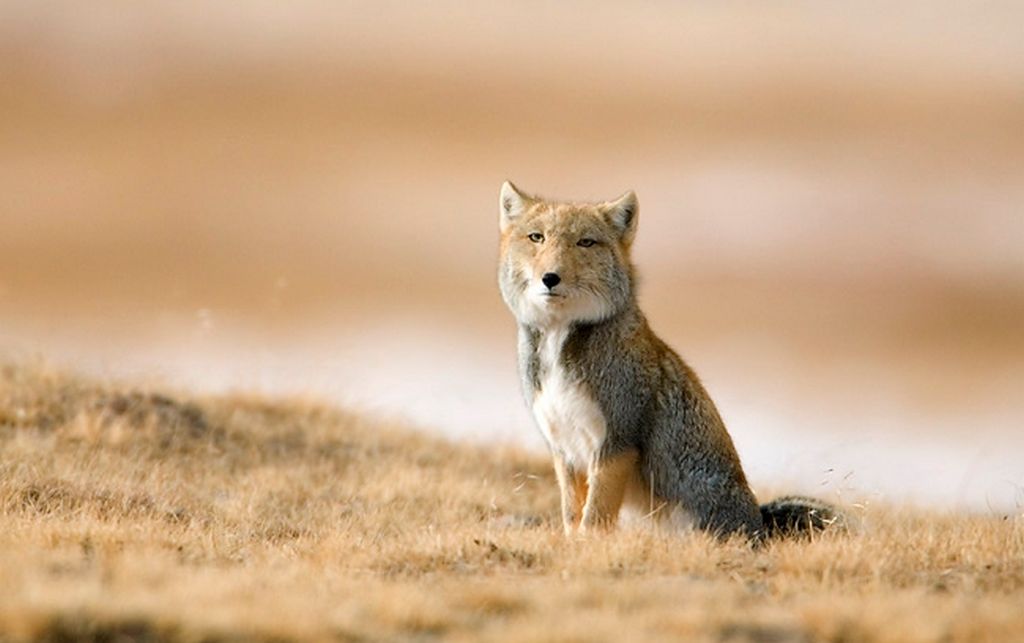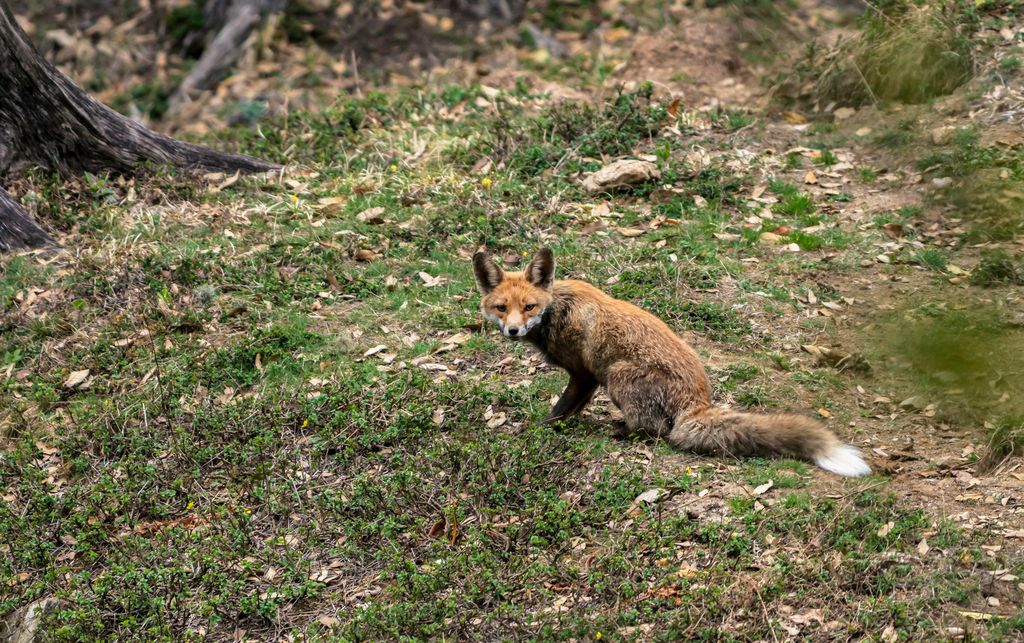In the vast tapestry of India’s rich and diverse wildlife, few creatures captivate the imagination quite like the foxes that roam its varied landscapes. These enigmatic canines, with their strikingly clever demeanor and elusive nature, have long held a place of intrigue and admiration in the hearts of wildlife enthusiasts and researchers alike.
From the snow-clad peaks of the Himalayas to the arid expanses of the Thar Desert, India shelters an assortment of fox species, each uniquely adapted to its habitat and exhibiting remarkable survival strategies. The intimate relationship between these cunning predators and their surroundings unravels a narrative steeped in ecological significance and evolutionary marvel.
While foxes globally are celebrated for their intelligence and adaptability, the Indian subcontinent harbors some lesser-known species that add an intriguing layer to the narrative. Their behaviors, ecological roles, and the interplay with the ecosystems they inhabit offer a compelling story waiting to be unveiled.
This article seeks to delve into the captivating world of Indian foxes, shedding light on their diverse species, habitats, behaviors, conservation challenges, and the cultural significance they hold within the fabric of India’s natural heritage. By understanding these remarkable creatures more intimately, we embark on a journey that not only enriches our knowledge but also fosters a deeper appreciation for the intricate web of life that thrives within the Indian wilderness.
Indian Fox (Vulpes bengalensis)

IUCN Status: Least Concern
Distribution:
Throughout the country except high Himalayas, North-eastern India and high rainfall areas of Western ghats. Endemic to Indian subcontinent.
Best Places to See Them:
Velavadar National Park and Rollapadu Wildlife Sanctuary.
Description:
The Indian fox, commonly found in dry, open landscapes with sparse tree and shrub cover, favors habitats like short open grasslands, scrub, or thorn forests. However, it tends to avoid steep terrains, tall grasslands, wet forests, and extremely arid zones. Interestingly, this species displays a remarkable tolerance for human presence and is frequently sighted in agricultural fields.
Across much of its range, Indian foxes are typically active during crepuscular and nocturnal periods. However, a study conducted by Dr. Sumit Dookia in and around Tal Chhapar Wildlife Sanctuary unveiled instances where they hunt during mid-day and exhibit bimodal activity when not confronted by large predators.
As omnivores, Indian foxes possess an opportunistic feeding behavior, consuming a diverse array of food items including insects, ground lizards, rodents, snakes, hedgehogs, hares, and various fruits. Beyond their dens, these foxes engage in multiple activities such as resting (sitting), feeding, playing, barking, defecating, scratching, stretching, and running. Studies reveal their preference for resting, followed by feeding, while allocating the remaining time to other behaviors.
Their dens exhibit a variety of structures, including simple short dens with small openings, complex cavernous dens with multiple entrances, and dens nestled beneath rocks or within rock crevices. Breeding typically occurs between December and January, with a gestation period of 50-60 days resulting in litters of 3-6 kits. Indian foxes are recognized for their monogamous behavior, with both parents actively participating in nurturing the young.
Understanding the behavioral patterns, habitat preferences, and distinctive adaptations of these Indian foxes not only enriches our comprehension of their ecology but also underscores their importance within the intricate fabric of India’s diverse wildlife.
Tibetan Sand Fox (Vulpes ferrilata)

IUCN Status: Least Concern
Distribution:
Native to Tibetan plateau, in India found in high altitude areas of Ladakh and Sikkim.
Best Places to See Them:
Changthang plateau, Ladakh and Tso Lhamo Plateau, Sikkim.
Description:
The Tibetan sand fox, a true fox species native to Asia, possesses a distinctive appearance marked by a plush, dense coat, a notably slender muzzle, and a bushy tail. Its fur showcases a blend of tan to rufous hues across its muzzle, crown, neck, back, and lower legs, while its cheeks, flanks, upper legs, and rumps exhibit a grey tone. Tipped with white, its tail complements this unique coloration. Sporting short ears, often tan to greyish tan on the back, they feature white undersides and insides.
Inhabiting upland plains and hills, Tibetan sand foxes thrive in semi-arid to arid grasslands and shrublands, favoring locations distant from heavy human activity or dense vegetation cover. These foxes typically form small family units composed of a mated pair and their offspring, although they tend to lead solitary lives. Not territorially bound, multiple pairs may coexist in proximity, sharing hunting territories and exhibiting a non-aggressive stance towards one another.
Their dwellings, strategically placed for rest, raising their young, or seeking refuge, are often situated at the base of boulders, along old beach lines, or on low slopes. These dens, equipped with multiple entrances averaging 25-35 cm (9.8-13.8 in) in diameter, serve as sanctuary and shelter.
Tibetan sand foxes adopt a diurnal hunting pattern, preying primarily on Plateau pikas, supplemented by rodents, marmots, woolly hares, and lizards. They’ve been observed to engage in a unique symbiotic relationship with brown bears during pika hunts, benefiting from the bears’ excavation of pikas, seizing them when they attempt to flee.
As carnivores and scavengers, these foxes rely heavily on Plateau pikas as their main prey, while also scavenging carcasses from Tibetan antelopes, musk deer, blue sheep, and livestock.
Similar to other fox species, Tibetan sand foxes form monogamous bonds, maintaining enduring partnerships with a single mate. With a gestation period lasting approximately 50 to 60 days, females give birth to 2-4 kits within their dens. The young, born blind and dependent, stay with their parents until they reach 8 to 10 months of age, gradually becoming self-sufficient over time.
Red Fox (Vulpes vulpes)

IUCN Status: Least Concern
Distribution:
The Himalaya from Kashmir to Sikkim and desert and arid areas of central and western India.
Best places to see them:
Hill stations in Himalayas and Desert National Park.
Description:
The Red fox, the largest among the true foxes and among the most widely dispersed members of the Carnivora order, inhabits the entire Northern Hemisphere. Its expansion closely correlates with human presence, displaying remarkable adaptability to new environments. Despite its name, the species often showcases a variety of color variations, including leucistic and melanistic individuals. Currently, there are forty-five recognized subspecies of the Red fox, categorized into two groups: one encompassing larger, vividly colored subspecies from the north, and the other comprising more primitive, desert subspecies found in the south.
In India, three subspecies of the Red fox are prevalent: the Indian desert fox (Vulpes vulpes pusila), the Kashmir fox (V. v. griffithi), and the Tibetan fox (V. v. monatna). Despite being one of the most extensively distributed mammalian species and studied, there have been no global population estimates made for this animal.
Male Red foxes are marginally larger than females. Their fur varies in color, spanning from pale yellowish-red to deep reddish-brown on the upper parts and white or ashy on the underside. Typically, their legs display black coloring on the lower parts, and their tails are often tipped with black or white, featuring tail glands. Upon reaching adulthood, Red foxes have yellow eyes and black or dark brown noses.
These foxes exist in family groups, sharing a communal territory. The size of their home range fluctuates depending on the environmental quality, ranging from 5 to 12 square kilometers in rich areas and extending from 20 to 50 square kilometers in poorer habitats. Each range is typically occupied by an adult male, one or two females, and their offspring. They reside in earthen dens, often equipped with emergency burrows within the territory, frequently using the same den across multiple generations.
Being omnivores and scavengers, Red foxes maintain a highly diverse diet. Their diet primarily comprises small rodents like voles, mice, hamsters, ground squirrels, gerbils, woodchucks, deer mice, and pocket gophers. Additionally, they consume birds, rabbits, porcupines, hares, raccoons, opossums, insects, and small reptiles. Carrion is also a part of their diet, typically consumed during the late evening hours and at night.
Red foxes exhibit monogamous behavior, forming pairs during the breeding season. Although some males may mate with multiple females, breeding occurs from January to March. Following mating, the female constructs one or more dens, often having spare dens in case of disturbance. The gestation period lasts 49-58 days, with average litters comprising 4-6 kits, though larger litters of up to 13 kits have been observed.
Apart from the aforementioned fox species found in India, Blanford’s fox (Vulpes cana) was reported once in the western part of India. This species is typically found in the Middle East, and its easternmost distribution extends to Pakistan.
Foxes play a crucial role in our ecosystem by serving as natural regulators of rodent and insect populations, while also acting as agents for seed dispersal. As ecologically versatile species, foxes exhibit the ability to thrive in a wide array of habitats and demonstrate remarkable adaptations to their surroundings. However, despite their adaptability, they remain vulnerable to habitat degradation and the depletion of their prey base.
Implementing effective conservation measures and providing protection for these fox species is crucial to ensure their survival. Such efforts would not only safeguard the fox populations but also contribute to maintaining the ecological balance within their habitats. Protecting these foxes is imperative to sustain the vital role they play in controlling pest populations and preserving the biodiversity of their ecosystems.

